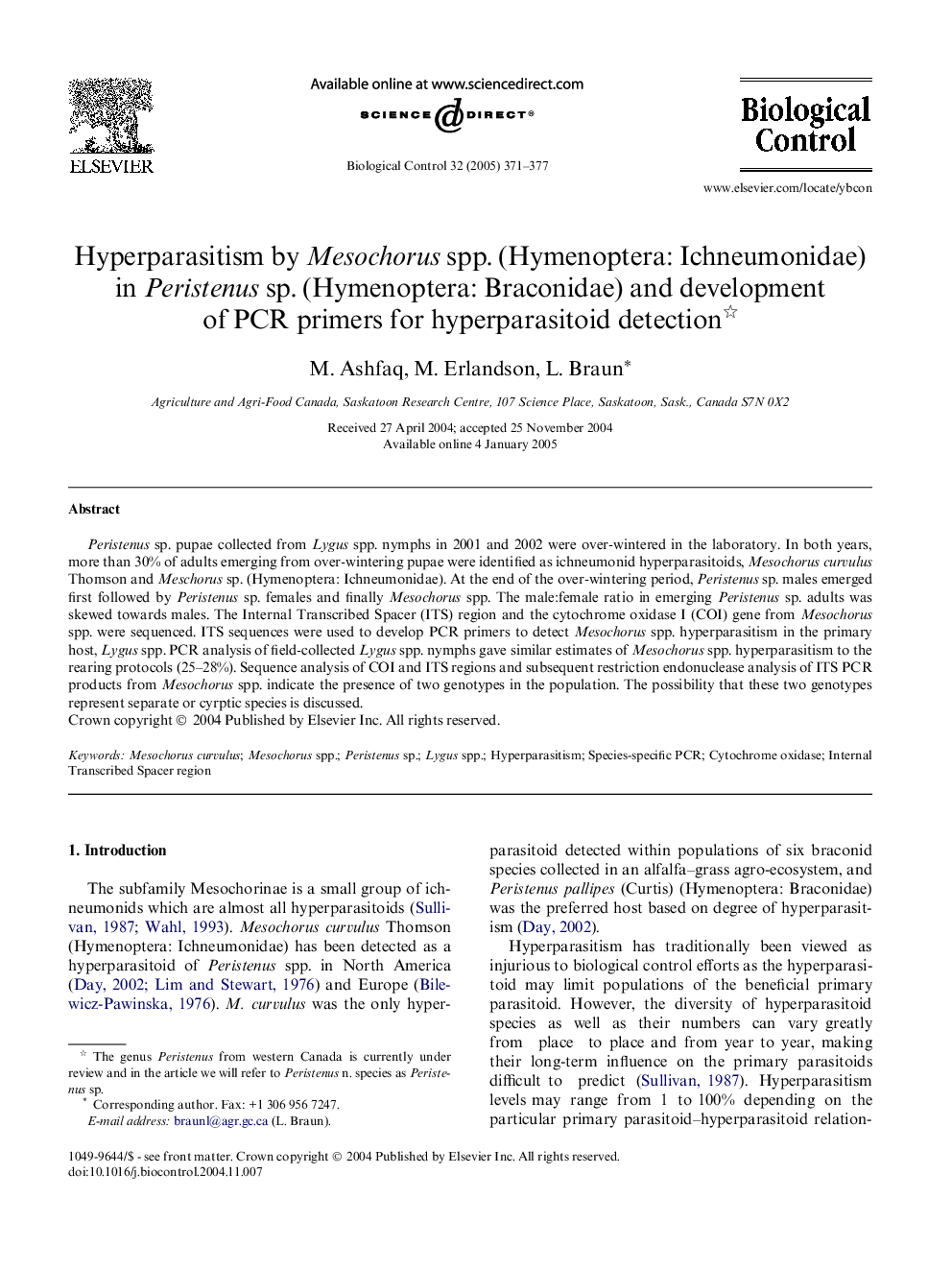| Article ID | Journal | Published Year | Pages | File Type |
|---|---|---|---|---|
| 9471941 | Biological Control | 2005 | 7 Pages |
Abstract
Peristenus sp. pupae collected from Lygus spp. nymphs in 2001 and 2002 were over-wintered in the laboratory. In both years, more than 30% of adults emerging from over-wintering pupae were identified as ichneumonid hyperparasitoids, Mesochorus curvulus Thomson and Meschorus sp. (Hymenoptera: Ichneumonidae). At the end of the over-wintering period, Peristenus sp. males emerged first followed by Peristenus sp. females and finally Mesochorus spp. The male:female ratio in emerging Peristenus sp. adults was skewed towards males. The Internal Transcribed Spacer (ITS) region and the cytochrome oxidase I (COI) gene from Mesochorus spp. were sequenced. ITS sequences were used to develop PCR primers to detect Mesochorus spp. hyperparasitism in the primary host, Lygus spp. PCR analysis of field-collected Lygus spp. nymphs gave similar estimates of Mesochorus spp. hyperparasitism to the rearing protocols (25-28%). Sequence analysis of COI and ITS regions and subsequent restriction endonuclease analysis of ITS PCR products from Mesochorus spp. indicate the presence of two genotypes in the population. The possibility that these two genotypes represent separate or cyrptic species is discussed.
Related Topics
Life Sciences
Agricultural and Biological Sciences
Agronomy and Crop Science
Authors
M. Ashfaq, M. Erlandson, L. Braun,
